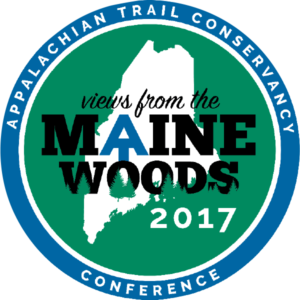Beauty is NOT in the Eye of the Beholder
“Beauty is in the eye of the beholder” is a phrase often tossed out by people seeking to develop the natural landscape along the A.T. corridor (by the way, this is not a quote from Shakespeare, but from a 19th Century novel). There is an intrinsic beauty in certain landscapes along the A.T. that is not enhanced by mountaintop buildings, pipeline corridors, and wind turbines — despite the claims of developers. Rather, the intrinsic beauty can be degraded and marred by certain development. This natural aesthetic beauty deserves protection.
This year, the Maine Appalachian Trail Club and the Appalachian Mountain Club introduced legislation to better balance our need for renewable energy and the visual impact of ever-larger wind turbines (the largest wind turbines in the Western Hemisphere were erected in Maine last fall) from viewpoints along the A.T. (the bill failed). Pipeline projects like Northern Pass in New Hampshire and Mountain Valley in Virginia will forever alter the natural aesthetic of mountain views enjoyed by Trail users. The value of jobs and economic return is often not measured against the loss in the value of the natural aesthetic.
 Those supporting the development proposal often assert that natural beauty is subjective and without quantifiable standards while those seeking to modify the development struggle to define natural beauty and to articulate its values.
Those supporting the development proposal often assert that natural beauty is subjective and without quantifiable standards while those seeking to modify the development struggle to define natural beauty and to articulate its values.
The Art & Land Conservation Symposium — sponsored by the Appalachian Trail Conservancy (ATC) — will discuss whether and how the aesthetic values (that were captured by artists in the past and used to support historic land conservation efforts) should be protected in a 21st Century that sees increased pressure to develop the American landscape — our mountain ridges, prairies, coast lines, and open spaces — with modern-day infrastructure.
Emerging from the ”Enjoy the View” initiative, the National Park Service has developed a methodology for describing and evaluating scenic resources. During the ATC Maine 2017 Conference, there will be a series of workshops on the new Visual Resource Inventory (VRI) protocol. VRI will provide objective and standardized measures to help articulate aesthetic values. The workshops will be followed by a full-day field trip to conduct field assessments putting the VRI protocol to use.
The Art & Land Conservation Symposium (August 3-4) and the ATC Maine 2017 Conference (August 4-11) will be held in Waterville, Maine. You can register for both events at: www.atc2017.org
![]() Katahdin from Millinocket Camp, 1895, oil on canvas by Frederic Edwin Church
Katahdin from Millinocket Camp, 1895, oil on canvas by Frederic Edwin Church